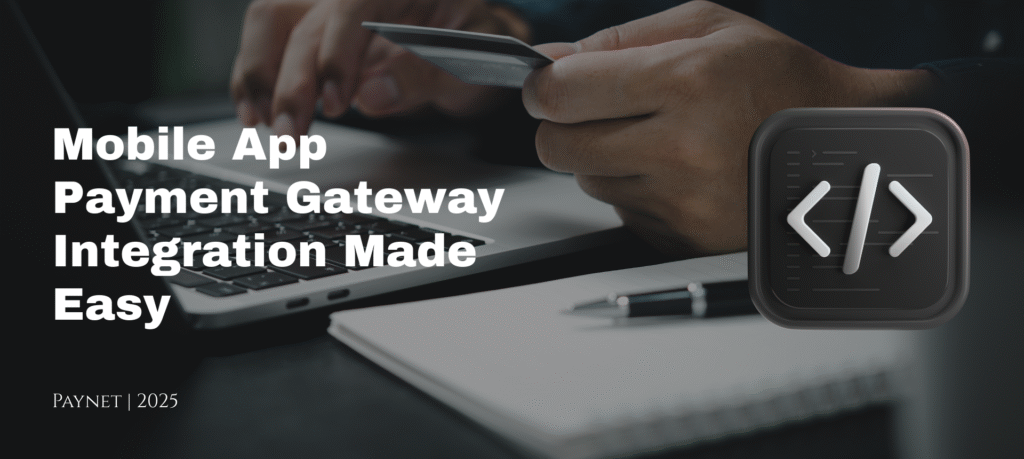User Behavior in Digital Wallet Usage: Insights That Are Shaping the Future of Digital Payments – [Cloned #1447]
Home UPI Growth and Adoption Insights: How India’s Favorite Payment System Is Shaping the Future of Finance Explore UPI growth...

Learn how to integrate a payment gateway into your mobile app effortlessly. Compare SDKs, APIs, and best practices for iOS & Android.
Integrating a payment gateway into your mobile app is crucial for driving conversions, ensuring security, and providing a smooth checkout experience. However, the process can seem complex—especially for developers new to payment systems.
This guide breaks down mobile payment integration into simple steps, covering:
✅ Choosing the right SDK vs. API approach
✅ iOS & Android best practices
✅ Optimizing for security & UX
✅ Top solutions for hassle-free integration
Option 1: Payment SDKs (Easiest)
Pre-built UI components for checkout
PCI-compliant, minimal coding required
Best for: Startups & apps needing quick deployment
Popular Mobile SDKs:
Stripe SDK (iOS/Android)
Razorpay Mobile SDK
Paynet One-Click Checkout
Example (Android – Razorpay):
Option 2: Custom API Integration (Flexible)
Full control over UI/UX
Requires PCI compliance (SAQ-A)
Best for: Apps needing branded checkout flows
Example (iOS – Stripe API):
Swift code :
STPAPIClient.shared.createPaymentMethod(with: cardParams) { method, error in
if error == nil { processPayment(method!) }
}
Step 1: Select a Mobile-Optimized Gateway
Ensure support for:
Digital wallets (Apple Pay, Google Pay, PhonePe)
UPI & local payment methods (India: UPI, Brazil: Pix)
One-click payments (tokenization)
Step 2: Optimize Checkout Flow
Guest checkout option (no forced login)
Auto-fill saved cards (using tokens)
Biometric authentication (Face ID, Touch ID)
Step 3: Implement Strong Security
TLS 1.2+ encryption for all API calls
Tokenization (never store raw card numbers)
3D Secure 2.0 for fraud prevention
For Android Apps:
Kotlin code :
val intent = Intent(Intent.ACTION_VIEW).apply {
data = Uri.parse(“upi://pay?pa=merchant@upi”)
}
startActivity(intent)
For iOS Apps:
Sandbox Testing
Test with gateway test cards (e.g., Stripe 4242 4242…)
Verify failed payment scenarios (insufficient funds, expired cards)
Performance Optimization
Cache payment methods locally (with tokenization)
Lazy-load payment UI to reduce app startup time
Analytics Tracking
Monitor checkout abandonment rates
Log payment method preferences (cards vs. UPI vs. wallets)
|
Provider
|
SDK Quality
|
Local Method
|
Fees
|
Best for
|
|---|---|---|---|---|
|
Stripe
|
5 Stars
|
30+ Countries
|
2.3% + 3rs
|
Global Apps
|
|
Razor Pay
|
4 Stars
|
India-Optimized
|
2% + 3rs
|
Indian Startups
|
|
Paynet
|
4 Stars
|
UPI Wallets
|
Custom Pricing
|
High Volume Apps
|
|
Paypal
|
3 Stars
|
Global
|
3.5% + GST
|
International Sales
|
❌ Blocking main thread during payment processing
❌ Hardcoding API keys in client-side code
❌ Ignoring alternate payment methods (UPI, wallets)
❌ Skipping PCI compliance for custom integrations
✅ Choose SDK (easy) vs API (flexible) based on needs
✅ Support digital wallets & local payment methods
✅ Implement tokenization & 3D Secure
✅ Test across devices & network conditions
✅ Monitor performance & conversions post-launch
Home UPI Growth and Adoption Insights: How India’s Favorite Payment System Is Shaping the Future of Finance Explore UPI growth...
Home User Behavior in Digital Wallet Usage: Insights That Are Shaping the Future of Digital Payments Explore changing user behavior...
Home New Features in UPI and Mobile Wallets 2025: Smarter, Safer & More Seamless Than Ever Explore the latest features...